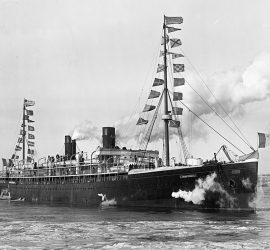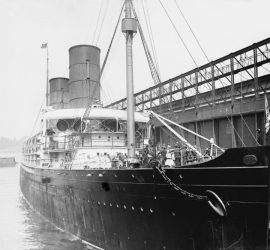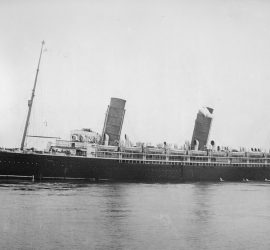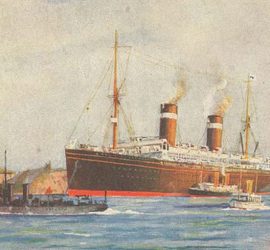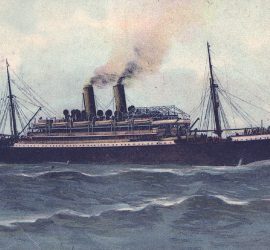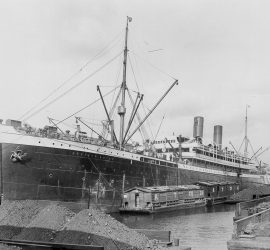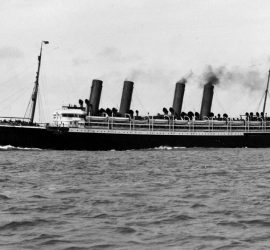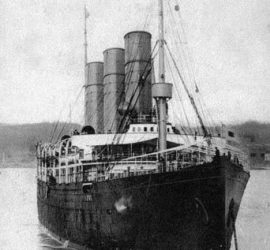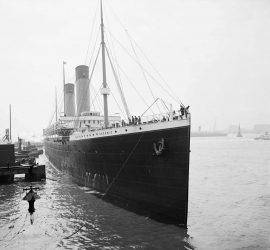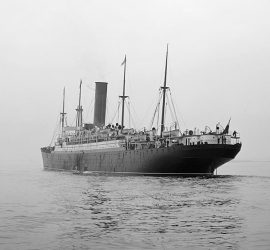1891 – 1923 / While not the largest or fastest ship of her time, the French Line’s La Touraine was known for her comfort, and enjoyed great popularity. She served in World War I and survived, but was sent to the scrappers when newer ships made her obsolete.
Monthly archives: March 2018
1893 – 1918 / The first twin-screw ship of the Cunard fleet, the Campania was a speed queen of her time. She held the Blue Riband of the North Atlantic, and served in World War I as an aircraft carrier. Sadly, she sank after an accidental collision, just four days before the armistice.
1893 – 1909 / An ocean greyhound, just like her older sister, the Lucania proved the fastest of the two. Setting records for both west- and eastbound crossings of the North Atlantic, she was one of many Cunard speed queens. Unfortunately, she was destroyed by fire in 1909.
1895 – 1923 / One of few ships of her time to exceed 10,000 gross tons, the St. Paul was one of the American Line’s prime vessels.
1896 – 1922 / Also known as City of Honolulu / Notable for being the first German ship to exceed 10,000 gross tons, Friedrich der Grosse was seized by the Americans in World War I and used as a troop transport. She survived the war, but was destroyed by fire in 1922.
1897 – 1935 / Also known as Omar and Edison / Employed on the North Atlanic as well as the immigration run to Australia, Königin Luise was handed over to Great Britain after World War I. In 1935, she was sent to Italy for scrapping.
1897 – 1914 / Norddeutscher Lloyd’s Kaiser Wilhelm der Grosse was the ship that shook the British by snatching the Blue Riband into German hands for the first time. Serving as an armed merchant cruiser in The Great War, she was sunk in battle with the HMS Highflyer.
1898 – 1916 / Also known as Burdigala / Intended as another Norddeutscher Lloyd speed champion, the Kaiser Friedrich failed to meet requirements and languished for many years. She eventually found her place as a French ship on the South America run, but was sunk by a mine during World War I.
1899 – 1914 / White Star Line’s second Oceanic intentionally left the race for the Blue Riband to others, and set a company standard of aiming for size and comfort instead. Having run aground in 1914, the ship was declared a total loss and was subsequently dismantled on the spot.
1900 – 1925 / A large yet modest ship in the Cunard fleet at the time, the Saxonia was a workhorse that remained with the company until her scrapping in 1925.

